KAANCH NETWORK (KNCH) Explained: Features, Price & How to Use It
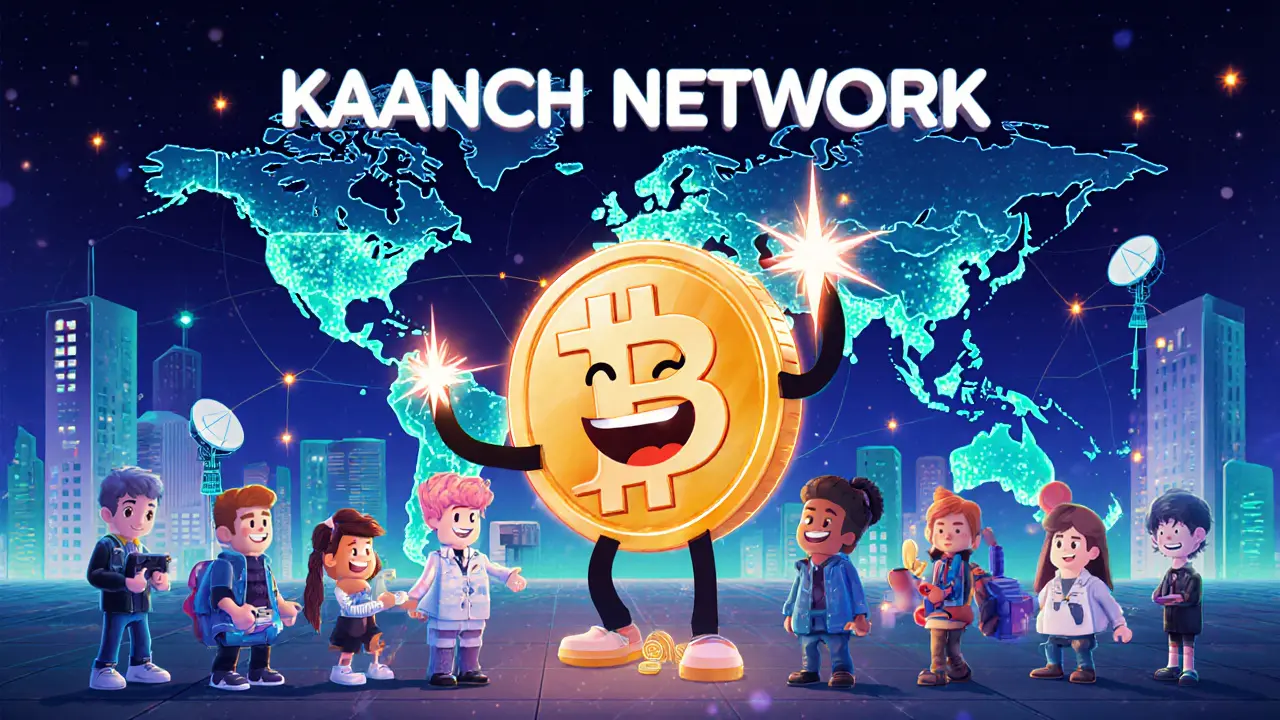
KAANCH NETWORK (KNCH) Calculator
Network Metrics
- Max TPS 1.4M
- Block Time 0.8s
- Active Validators 3,600+
- Transaction Fee Sub-cent
Token Information
- Total Supply 58M KNCH
- Current Price $0.205
- 24h Volume $37K
- Market Cap Low
Staking Rewards Calculator
Estimated Annual Rewards
0.00 KNCH
Based on current staking parameters
Transaction Cost Estimator
Estimated Total Transaction Cost
0.00 KNCH
For 10 transactions
Key Takeaways
- KAANCH NETWORK is a high‑throughput Layer 1 blockchain that can process up to 1.4million transactions per second.
- The native token KNCH is capped at 58million coins and is used for staking, governance, and fee payment.
- Consensus is achieved through Delegated Proof‑of‑Stake (DPoS) with more than 3,600 active validators worldwide.
- Transaction fees are near‑zero, making the network ideal for micro‑transactions, gaming, and real‑time finance.
- As of October2025 the token trades around $0.20USD, with mixed analyst sentiment and a 70‑point Greed score on the Fear & Greed Index.
What is KAANCH NETWORK?
KAANCH NETWORK is a purpose‑built Layer 1 blockchain platform designed for massive scalability, low‑cost transactions, and developer friendliness. Founded by Rahul Kumar and Ved Singh in 2023 (research began in late2021), the project aims to move beyond the congestion problems of older chains by delivering near‑instant finality and an architecture that supports tokenized assets, decentralized applications (DApps), and real‑world financial use cases.
Core Technical Specs
The network’s performance claims are bold: 1.4million transactions per second (TPS) with an average block time of 0.8seconds. Those numbers come from a combination of asynchronous processing, sharded transaction handling, and highly optimized data structures that keep computational overhead low.
Consensus is handled by Delegated Proof‑of‑Stake (DPoS). Token holders elect a set of validators, and those validators produce blocks on behalf of the network. Over 3,600 validators are currently running nodes in locations ranging from North America to Southeast Asia, providing geographic redundancy and resistance to single‑point attacks.
Below is a quick reference of the most important technical attributes:
| Attribute | Value |
|---|---|
| Consensus Mechanism | Delegated Proof‑of‑Stake (DPoS) |
| Active Validators | ~3,600 worldwide |
| Maximum TPS | 1.4million |
| Average Block Time | 0.8seconds |
| Native Token Supply | 58million KNCH |
| Transaction Fees | Near‑zero (sub‑cent) |
| Launch Year | 2023 (public release ongoing) |
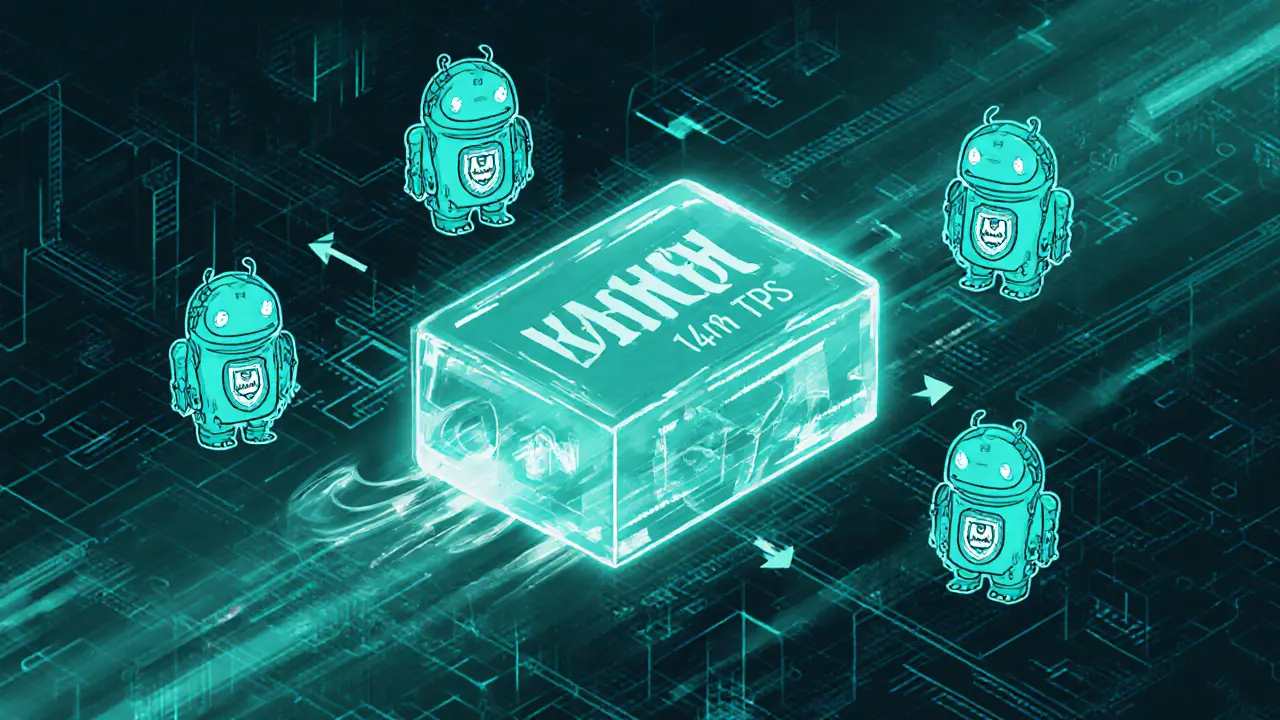
KNCH Token Overview
The KNCH token is the economic engine of the network. It has a fixed supply of 58million coins, making it inherently scarce. Utility covers four core areas:
- Staking: Holders can delegate their KNCH to validators and earn a share of block rewards.
- Governance: Token holders vote on protocol upgrades, fee adjustments, and treasury allocations through a DAO framework.
- Transaction Fees: Although fees are tiny, they are always paid in KNCH, keeping demand on‑chain.
- Validator Incentives: Validators must stake a bond of KNCH, aligning their financial interests with network security.
As of 7October2025, market data shows KNCH trading around $0.205USD, with a 24‑hour volume of roughly $37k. The price has been volatile, down 2.2% in the last day but up 3.1% over the past week.
Market Performance & Sentiment
KNCH’s market cap is currently negligible because only a tiny fraction of the total supply is circulating. Daily trading volume hovers in the low‑tens‑of‑thousands USD range, reflecting early‑stage liquidity.
Analyst outlook is mixed. CoinCodex predicts a bearish trajectory for 2025, projecting a price of $0.153 (‑25% from today). Yet the Fear & Greed Index reads a 70 (Greed), suggesting investors are still willing to take on risk. Technical metrics show a 14‑day RSI of 50.8 (neutral) and a volatility score of 10.1, indicating modest price swings.
In practice, short‑term traders might view the current dip as a buying opportunity, while long‑term holders should focus on network adoption metrics (validator growth, DApp launches) rather than price alone.
How to Get Started with KNCH
For newcomers, the first step is a compatible wallet. The network supports WalletConnect, so you can use popular options like MetaMask, Trust Wallet, or the native KAANCH wallet (when released). Here’s a quick checklist:
- Install a WalletConnect‑enabled wallet. Enable the custom network option.
- Add the KAANCH RPC endpoint. Use the official endpoint from the KAANCH documentation (e.g.,
https://rpc.kaanch.network). - Fund the wallet with ETH. Some exchanges require ETH for the initial bridge transaction if you buy KNCH on an Ethereum‑based DEX.
- Purchase KNCH. You can trade on Phemex, CoinCodex listings, or use a centralized exchange that lists the token.
- Stake or delegate. Once you hold KNCH, go to the staking dashboard and delegate to a validator of your choice.
If you prefer a direct purchase, you can buy ETH on Coinbase or Binance, transfer it to your wallet, then trade ETH for KNCH on a supported DEX. Always double‑check contract addresses to avoid scams.
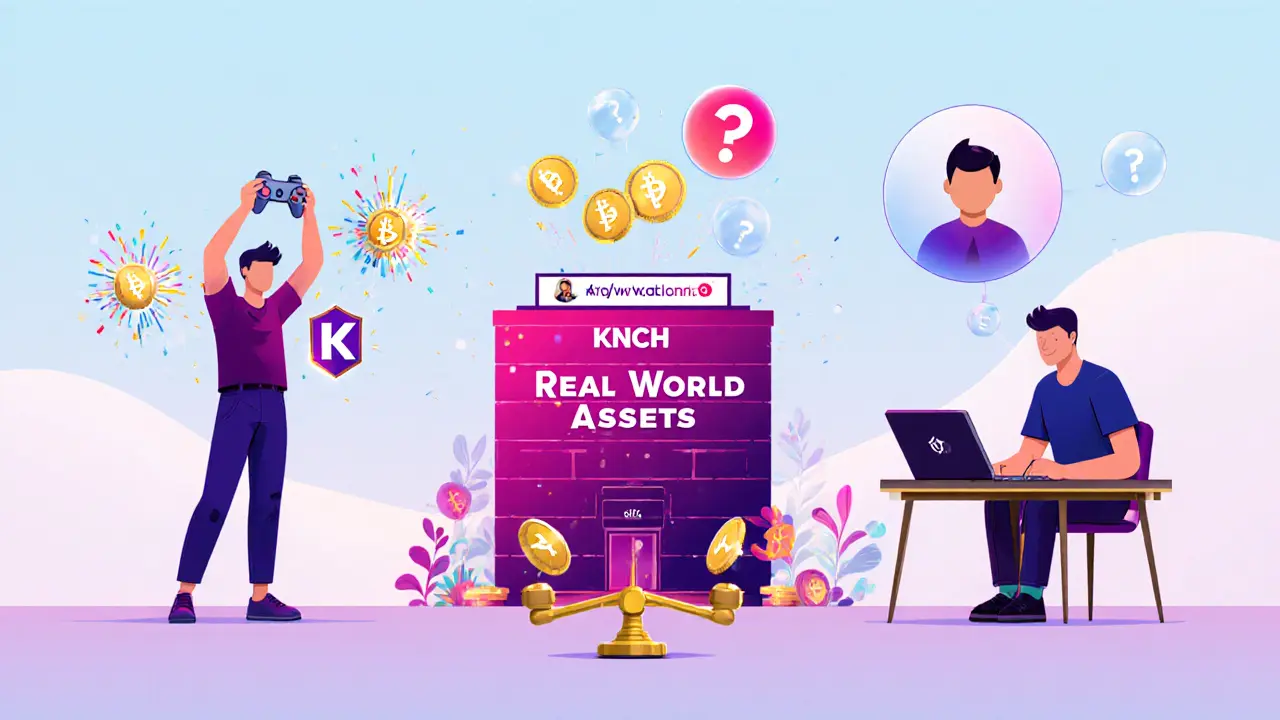
Use Cases and Ecosystem
KAANCH positions itself as a versatile platform for several high‑frequency scenarios:
- Micro‑transactions: Near‑zero fees enable tipping, content pay‑per‑view, and IoT payments.
- Gaming: Real‑time in‑game asset swaps and instant rewards without lag.
- Asset Tokenization: The network offers a built‑in tokenization layer, allowing real‑world assets (real estate, commodities) to be represented as digital tokens.
- Decentralized Exchanges (DEXs): Low‑cost swaps attract liquidity providers looking for cost‑effective routes.
- Identity Layer: Users can register
.knchdomains that map to wallet addresses, creating human‑readable IDs for on‑chain profiles.
Developers can write smart contracts in familiar languages, and the platform provides SDKs for rapid prototyping. Early adopters include a few indie game studios and a handful of fintech startups experimenting with real‑time settlement.
Risks and Community Sentiment
Every new blockchain faces hurdles, and KAANCH is no exception. Key concerns include:
- Technical Ambiguity: Conflicting reports label KNCH as an independent Layer 1, an ERC‑20 token, or even Solana‑based. This lack of clear positioning can confuse investors and developers.
- Liquidity Constraints: Low daily volume means slippage risk for larger trades.
- Validator Centralization Risk: While 3,600 validators sound decentralized, the actual stake distribution may be skewed toward a few large delegators.
- Competition: Established high‑throughput chains like Solana, Avalanche, and upcoming Layer 2 solutions already have sizable ecosystems.
Community chatter on forums is modest, but those who are active praise the ultra‑low fees and the ambition to tokenise real‑world assets. Critics point to the uncertain roadmap and the need for a robust mainnet launch to prove the 1.4MTPS claim.
Frequently Asked Questions
What problem does KAANCH NETWORK aim to solve?
It targets the scalability and high‑fee issues that plague older chains like Ethereum, offering near‑instant, cheap transactions for applications that need massive throughput.
Is KNCH an ERC‑20 token?
The official stance is that KNCH is the native token of an independent Layer 1. Some bridges expose it as an ERC‑20 wrapper, which can cause confusion.
How can I earn rewards with KNCH?
By delegating your KNCH to a validator. Rewards are distributed proportionally to the amount you stake and the performance of the validator you chose.
What are the fees for sending a transaction?
Fees are typically less than a cent, often amounting to fractions of a KNCH token, effectively making them negligible for most users.
Where can I buy KNCH?
Listed on smaller exchanges such as Phemex and CoinCodex, it can also be acquired via decentralized swaps that bridge from ETH or other major chains.
Whether you’re a developer hunting for a fast chain or an investor curious about a new token, understanding KAANCH’s technology, tokenomics, and market dynamics is crucial before you dive in. Keep an eye on validator growth, real‑world use cases, and the upcoming mainnet milestones - those will be the true indicators of long‑term success.

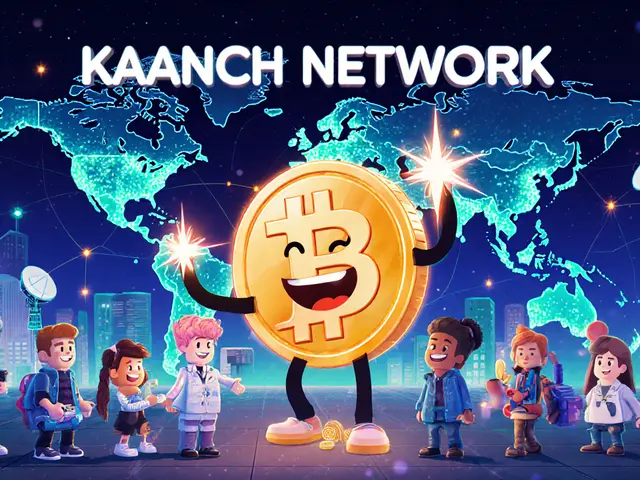
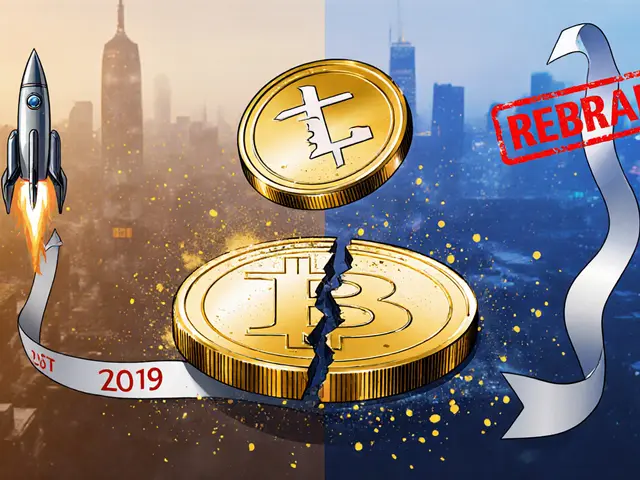
Debra Sears
Reading through the KNCH overview, I’m impressed by the low‑fee structure and the DPoS validator set. For anyone new to staking, delegating a modest amount can still earn decent rewards over time. The fact that the network claims sub‑cent transaction costs makes it attractive for micro‑payments. If you’re thinking about getting involved, start by securing a WalletConnect‑compatible wallet and add the custom RPC endpoint. From there, you can purchase a small tranche of KNCH on a smaller exchange and delegate it to a validator you trust.
Matthew Laird
The whole crypto hype is nothing but a gamble that drags America’s hardworking folks into risky schemes. We should be focusing on real innovation at home, not on speculative tokens that promise “near‑zero fees” while delivering nothing solid. If the US wants true financial sovereignty, ditch these foreign‑origin blockchains and back homegrown solutions. Until then, it’s just a wild west of scams masquerading as tech.
Lara Decker
Honestly, the tokenomics look a bit vague to me.
Anna Engel
Oh great, another “high‑throughput” chain that claims 1.4 million TPS-because we obviously needed another way to spam the blockchain universe.
Marcus Henderson
Esteemed community members, I wish to convey my sincere admiration for the technical ambition demonstrated by the KAANCH NETWORK. The prospect of sub‑cent transaction fees aligns with the broader objective of fostering inclusive digital commerce. Moreover, the delegation model appears to incentivize validator participation whilst preserving network security. It would be prudent for prospective participants to examine the validator distribution to assess decentralisation. Please consider the long‑term sustainability of the token supply when evaluating investment potential. I remain hopeful that, with diligent governance, this platform may achieve its envisaged utility. Thank you for your attention.
Jason Wuchenich
Nice rundown! For newcomers, I’d say start small, learn the staking dashboard, and don’t get overwhelmed. The community is pretty welcoming if you ask questions.
Andrew Lin
Look, this so called “high‑throughput” thing is just another US‑centric hype train. I bet the devs are copy‑pasting code from Solana and calling it theirs. The community talk is all about “real‑world asset tokenization” but where’s the actual usage? It’s all talk, no walk. If you’re not careful you’ll lose yer coins fast.
Jasmine Kate
Wow, the low fees are fire! I can finally imagine paying for in‑game skins without draining my wallet. The DPoS vibe feels fresh, but I’m still waiting to see some big DApps actually launch. If they pull it off, this could be a game‑changer for gamers and micro‑transactions alike. Let’s keep an eye on validator performance, though.
Franceska Willis
Alright, let’s get creative here: imagine a world where your coffee purchase is settled on a chain that costs less than a penny. That’s the promise of KNCH, and it’s pretty dang exciting. The token’s capped supply adds a splash of scarcity, which could spark some interesting market dynamics. Just remember, the ecosystem is still baby‑steps, so don’t bet the farm on it yet. Still, the vision is colorful and worth watching.
EDWARD SAKTI PUTRA
Staying cautious but optimistic about the network’s growth.
Heather Zappella
For those exploring the KAANCH NETWORK, it is essential to understand the multi‑step onboarding process. First, ensure you have a WalletConnect‑compatible wallet such as MetaMask or Trust Wallet. Next, add a custom RPC endpoint – the official documentation lists https://rpc.kaanch.network as the primary gateway. After configuring the network, you will need to acquire KNCH, which is currently listed on niche exchanges like Phemex and CoinCodex, or via decentralized bridges from Ethereum. It is advisable to verify the contract address carefully to avoid fraudulent tokens. Once you hold KNCH, you may delegate it to a validator through the staking dashboard; consider validators with a strong performance history and reasonable commission rates. Monitoring validator uptime and reward distribution will help optimize your staking yields. Additionally, keep an eye on the network’s validator count, as a more distributed set can indicate healthier decentralisation. Finally, remember that transaction fees are sub‑cent, making micro‑transactions feasible without eroding your balance. By following these steps, you can safely engage with the KAANCH ecosystem and contribute to its growth while managing risk responsibly.
Kate O'Brien
Do you ever wonder why big tech companies are so quiet about KAANCH? It feels like there’s a hidden agenda to keep this tech under wraps until they’re ready to use it for surveillance.
Ricky Xibey
Sounds interesting, will watch the updates.